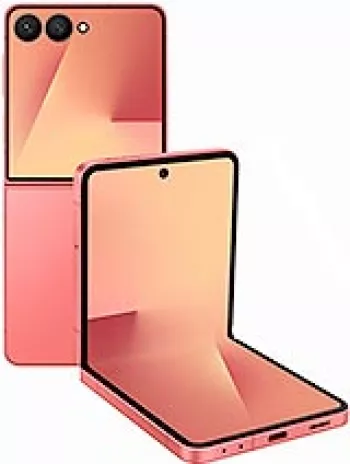
Overview of Samsung F480
The Samsung F480, also known as Samsung Tocco in certain markets, is a compact and stylish feature phone that was introduced in early 2008. It was designed to cater to users looking for a sleek and lightweight device with essential multimedia features and a touch-based interface. Although it was discontinued, it remains a memorable device for those who experienced it during its time.
Design and Build
With its dimensions of 98.4 x 55 x 11.6 mm and weighing just 100.6 grams, the Samsung F480 was incredibly portable, fitting comfortably in most pockets and hands. The device featured a minimalist design, with a single Mini-SIM card slot and an elegant black color scheme that gave it a modern and professional appearance. The front of the phone was dominated by its 2.8-inch TFT display, further complemented by a few physical buttons below the screen.
Display
The 2.8-inch TFT display sported a resolution of 240 x 320 pixels, offering a pixel density of approximately 143 ppi. This screen size and resolution were quite competitive for feature phones at the time, providing users with vibrant colors and decent clarity for everyday interactions. The touch interface was a defining feature, allowing users to navigate menus and functions intuitively.
Performance and Hardware
During its prime, the Samsung F480 ran on a basic feature phone operating system. Though specific details about its processor and RAM are not widely documented, the device was well-optimized for its user interface functions and lightweight software applications. With 232MB of internal storage and expandable memory through a microSDHC slot, users had ample space for storing photos, music, and other files.
Camera Capabilities
One of the Samsung F480's standout features was its 5-megapixel primary camera with autofocus and an LED flash. This allowed users to capture decent quality photographs for a device of its time, making it popular among users who wanted to take snapshots on the go. The device also supported video recording at 320p resolution. Additionally, a VGA front-facing camera was available for video calls, a feature not commonly found in feature phones of that era.
Connectivity and Network
The Samsung F480 supported GSM and HSPA networks, offering 3G connectivity with speeds of up to 7.2 Mbps. While it did not feature WLAN capabilities, it offered Bluetooth 2.0 with A2DP for wireless file transfers and connectivity with compatible devices. USB 2.0 supported data synchronization and charging, while a stereo FM radio with RDS was included for entertainment on the go.
Sound and Multimedia
The device featured a loudspeaker and supported vibration alerts, downloadable polyphonic, and MP3 ringtones. Despite the absence of a 3.5mm headphone jack, the sound quality was adequate for a feature phone, catering to the popular demand for basic multimedia functionality at the time. Users had access to Java-based games and applications, further enhancing the device's entertainment value.
Battery and Power Management
Equipped with a removable 1000mAh Li-Ion battery, the Samsung F480 provided up to 250 hours of standby time and approximately 3 hours of talk time. Though moderate by today's standards, this battery performance was sufficient for daily usage without frequent recharging, especially given the power efficiency of the device's hardware and software.
Additional Features
The Samsung F480 included various additional features, such as SMS, EMS, MMS, email, and instant messaging support, making it versatile for communication needs. The web browsing experience was facilitated by a WAP 2.0/xHTML/HTML browser, suitable for light internet surfing. Basic sensors and productivity tools were also integrated into the phone's user interface.
Pricing and Market Impact
The Samsung F480 was launched with a price tag of approximately 140 EUR, targeting consumers who desired a premium-looking device without the high costs associated with top-tier smartphones. Its impressive design, touch-based interface, and multimedia capabilities contributed to its popularity in various markets, positioning it as a forerunner in Samsung's evolution towards touchscreen devices.
Conclusion
In summary, the Samsung F480 was a remarkable feature phone that showcased Samsung's innovation in design and functionality during the late 2000s. Despite being discontinued, it left a lasting impression on its users with its sleek design, capable camera, and touch interface, serving as a precursor to the more advanced touchscreen phones that followed. Today, it is remembered fondly by technology enthusiasts as a pivotal device in Samsung's mobile phone history.
Main Features of Samsung F480
- Supported Network Technologies: GSM / HSPA
- Compact Dimensions: 98.4 x 55 x 11.6 mm
- Lightweight: 100.6 g (3.56 oz)
- Display: 2.8 inches TFT, 256K colors
- High-Resolution Main Camera: 5 MP with autofocus and LED flash
- Expandable Memory: microSDHC (dedicated slot) up to several GBs
- Internal Storage: 232MB
- Bluetooth 2.0, A2DP for wireless connectivity
- Stereo FM radio with RDS
- Removable Li-Ion 1000 mAh Battery
- Various Messaging Formats: SMS, EMS, MMS, Email, Instant Messaging
Disadvantages of Samsung F480
- No Wi-Fi support, limiting internet connectivity to mobile data only.
- Lacks GPS, which means no location-based services are available.
- No 3.5mm headphone jack, requiring adapters for standard headphones.
- Limited internal memory of 232MB, which may require frequent use of microSD card expansion.
- Low screen resolution of 240 x 320 pixels with a low pixel density of ~143 ppi, affecting display clarity.
- VGA front camera may not provide satisfactory selfie quality.
- Limited video recording capability at 320p, resulting in low-quality videos.
- Basic removable Li-Ion 1000 mAh battery with relatively short talk time of up to 3 hours.
- Discontinued status, meaning no official software updates or support.










View Also
More Phones
All Rights Reserved +14266 Phones © Mobilawy 2025

























